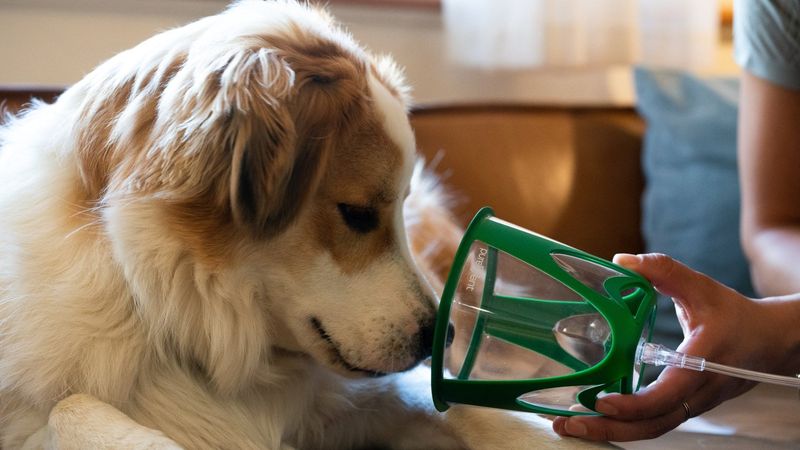15 Signs It’s Time To Put Down Your Dog

Making the decision to say goodbye to a beloved canine companion is one of the hardest choices a pet owner will ever face.
While there’s no perfect time, certain signs can help you understand when euthanasia might be the most compassionate option for your dog. Recognizing these indicators can provide clarity during an emotionally overwhelming time and help ensure your faithful friend doesn’t suffer unnecessarily.
1. Chronic Pain That Can’t Be Managed

Your dog’s pain level has become the defining feature of their existence. Despite medication and veterinary interventions, they whimper, pant excessively, or show tension in their body even at rest. Animals instinctively hide discomfort, so visible pain signals often represent significant suffering. When good days become rare exceptions rather than the rule, quality of life has diminished substantially.
2. Unable To Eat Or Drink Independently

Food and water are fundamental needs. When your dog loses interest in eating their favorite treats or requires assistance with basic hydration, their body is sending a message. Force-feeding might prolong life temporarily but often causes stress. The inability to maintain nutrition independently typically indicates serious underlying issues affecting quality of life.
3. Loss Of Bladder Or Bowel Control

Accidents happen occasionally with aging pets, but consistent incontinence causes distress for dogs who’ve been house-trained. Many dogs feel shame when they soil themselves or their living area. Beyond the practical challenges of cleanup, incontinence often signals neurological decline or other serious conditions. Your dog’s dignity matters, especially when they’re aware of but unable to control these functions.
4. Difficulty Breathing Or Constant Panting

Labored breathing fundamentally restricts your dog’s ability to feel comfortable. When every breath becomes work, oxygen deprivation affects all body systems and creates constant anxiety. Watch for extended neck posture, flared nostrils, or visible chest movement during rest. Breathing difficulties rarely improve significantly in terminal conditions and create a sensation similar to drowning or suffocation.
5. Unable To Stand Or Move Without Help

Mobility represents freedom and independence for dogs. When your companion can no longer stand up to eat, eliminate waste, or change positions without assistance, their quality of life diminishes significantly. The frustration of wanting to move but being unable to creates psychological distress. Physical therapy and mobility aids help in some cases, but when these interventions fail, immobility becomes increasingly distressing.
6. Stopped Responding To Family Members

Social connection defines much of a dog’s happiness. When your once-affectionate companion no longer recognizes family members or shows interest in interaction, cognitive decline has significantly progressed. This detachment often indicates neurological changes affecting the brain. While some days might bring brief moments of recognition, the permanent loss of social bonds removes a central joy from your dog’s life experience.
7. Severe Weight Loss Despite Eating

Noticeable muscle wasting and inability to maintain weight despite adequate caloric intake often indicate advanced disease processes. Your dog’s body is essentially consuming itself. When you can feel every rib and vertebra despite nutritional support, metabolic functions are failing. This cachexia differs from simple weight loss and represents the body’s inability to utilize nutrition properly.
8. Frequent Vomiting Or Diarrhea That Won’t Resolve

Occasional digestive upsets happen, but persistent gastrointestinal distress causes suffering and dehydration. Your dog experiences physical discomfort and the emotional distress of being unable to control bodily functions. When medication and dietary changes no longer help, these symptoms often indicate advanced organ failure. Constant nausea and intestinal pain significantly reduce quality of life even when other symptoms seem manageable.
9. Tumors That Are Visibly Growing Or Bleeding

External masses that continue expanding, breaking open, or bleeding indicate cancer progression beyond control. These growths cause physical pain, infection risk, and often emit odors distressing to both dog and owner. When tumors impact basic functions like eating, walking, or eliminating waste, suffering increases dramatically. Some cancers can be managed for extended periods, but rapidly growing or ulcerating tumors often signal end-stage disease.
10. No Interest In Previously Enjoyed Activities

Joy matters in life quality assessment. The dog who once raced for tennis balls but now watches without interest has lost a fundamental source of happiness. Activity avoidance goes beyond normal aging slowdown. When your companion shows no enthusiasm for walks, treats, or attention, their emotional experience has fundamentally changed. This persistent apathy often indicates pain or neurological changes affecting pleasure centers.
11. More Bad Days Than Good Days

Quality matters more than quantity when evaluating life. Track your dog’s good versus difficult days on a simple calendar to recognize declining patterns objectively. Good days include eating willingly, showing interest in surroundings, and experiencing comfort. When three or more consecutive days bring suffering without reprieve, the balance has shifted significantly. This pattern helps overcome the natural tendency to focus on occasional good moments.
12. Seizures That Increase In Frequency Or Severity

Neurological events cause fear, disorientation, and physical trauma. While some seizure disorders can be managed with medication, increasing frequency or severity indicates disease progression. After each episode, recovery periods lengthen and cognitive function may deteriorate further. When seizures occur daily or cluster without full recovery between events, brain damage accumulates. The repeated cycle of seizure and post-ictal confusion creates ongoing suffering.
13. Your Veterinarian Suggests Euthanasia

Veterinary professionals have extensive experience with end-of-life trajectories and can recognize suffering objectively. When a trusted vet who knows your dog’s history suggests euthanasia, they’re offering their medical assessment. While the decision remains yours, veterinary recommendation carries significant weight. Most veterinarians actually tend to wait longer than necessary to suggest euthanasia, so when they do, conditions have typically progressed substantially.
14. Struggling To Breathe Even When Resting

Oxygen deprivation creates primal panic sensations. A dog struggling for breath experiences significant anxiety even while lying still. Blue-tinged gums, extended neck position, or abdominal breathing indicate respiratory distress. This symptom rarely improves in terminal conditions and represents one of the most distressing experiences for both dog and owner. Euthanasia provides immediate relief from the sensation of suffocation.
15. You Can See Suffering In Their Eyes

Sometimes the most telling indicator comes from your unique bond and understanding of your dog’s expressions. The eyes often communicate what medical symptoms cannot fully capture. Many owners describe seeing a distinct look—a mixture of fatigue, resignation, and sometimes what appears as a request for help. This connection between human and animal companion transcends clinical measures but represents a valid observation from the person who knows the dog best.






